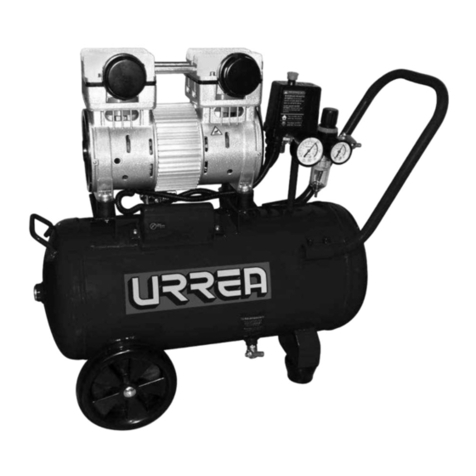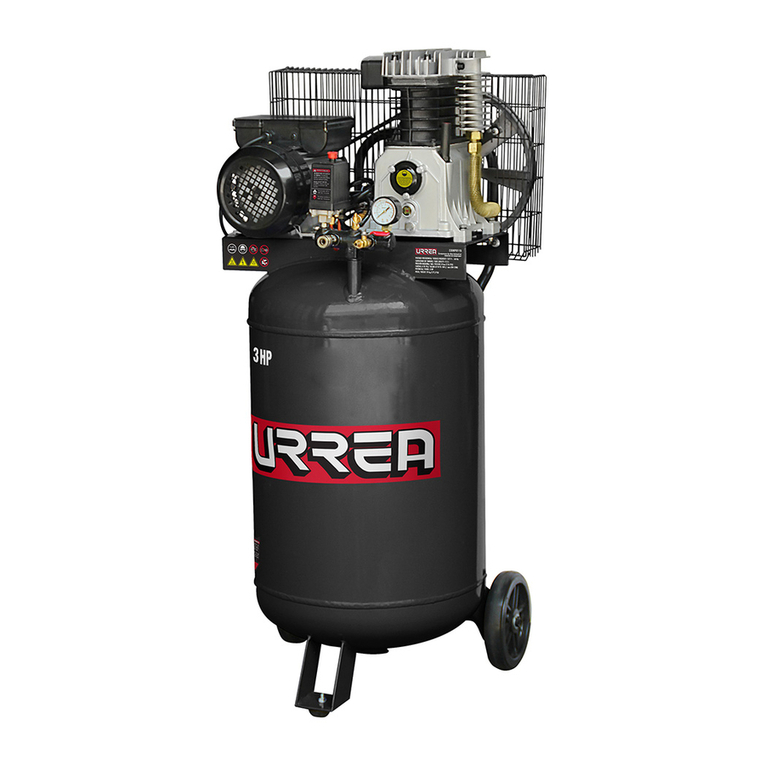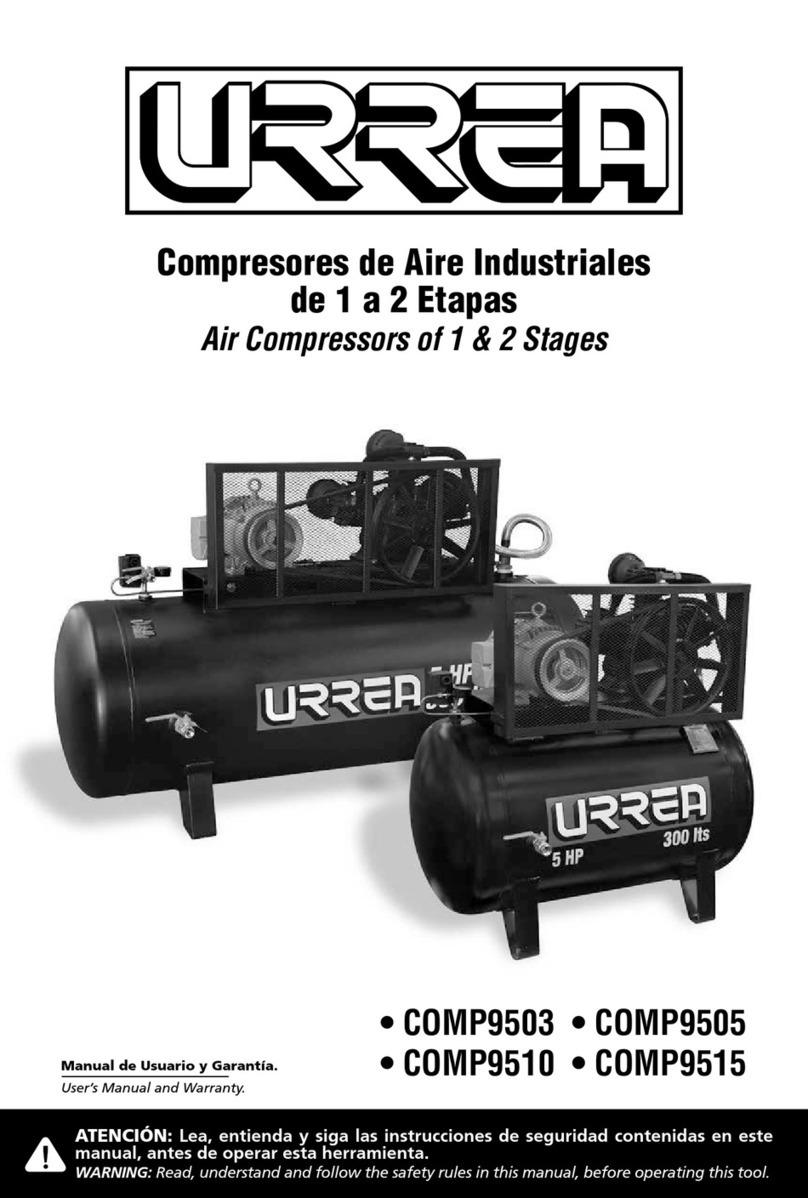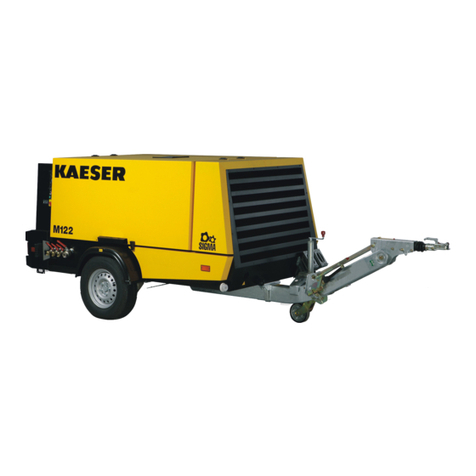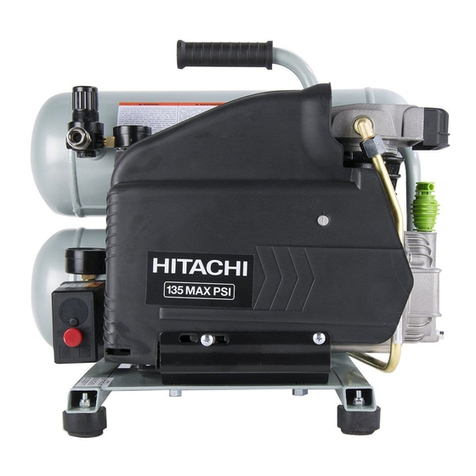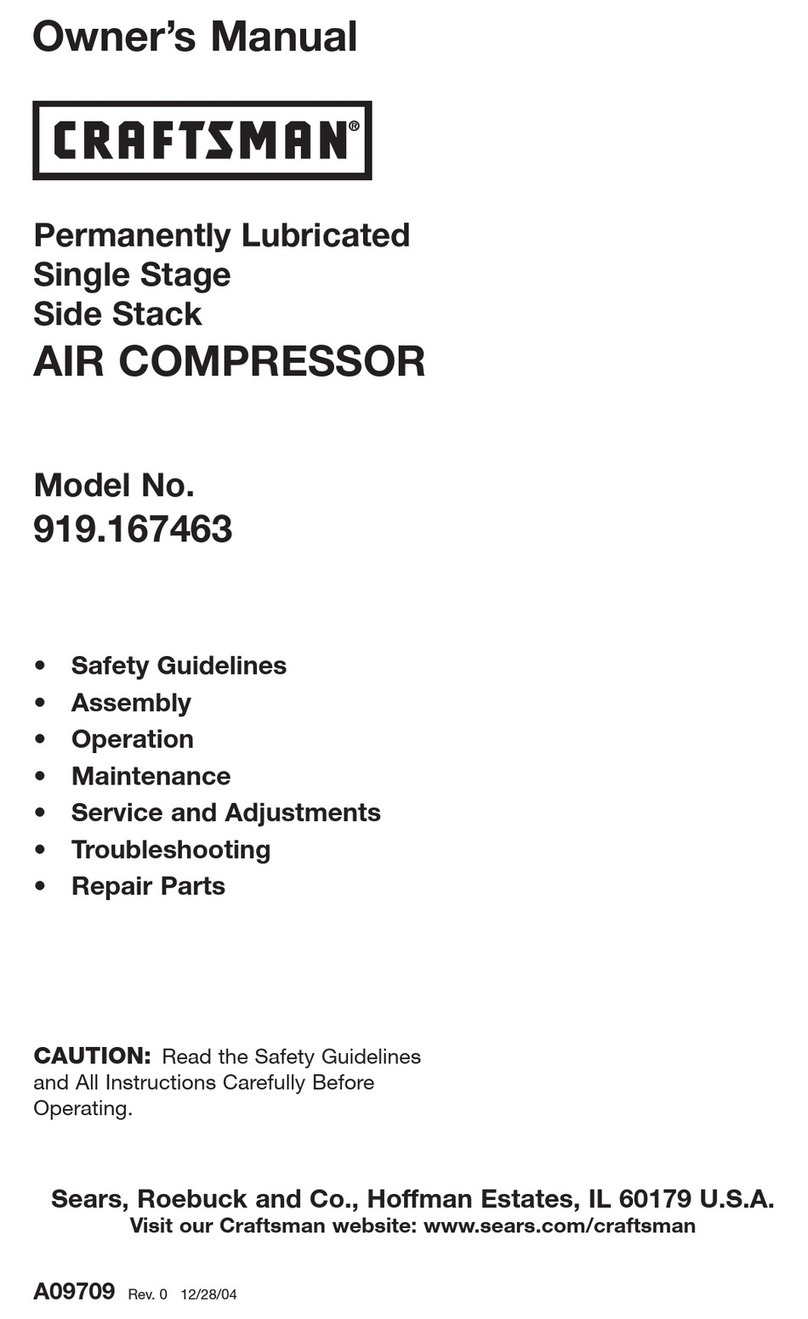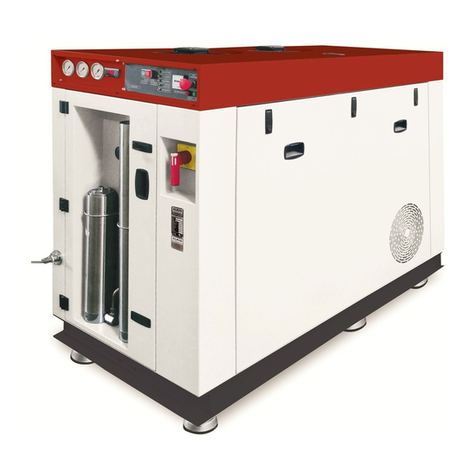
5
ESPAÑOL•Manual de Usuario
SERVICIO
Haga revisar su herramienta eléctrica por un
servicio de reparación calificado usando sola-
mente piezas de reemplazo idénticas. Esto ga-
rantizará que la seguridad de la herramienta
eléctrica se mantiene.
ADVERTENCIAS DE SEGURIDAD
PARA COMPRESORES DE AIRE
IMPORTANTE: Esta máquina genera aire
comprimido el cual se utiliza para la operación
de herramientas neumáticas. NO SE PERMITE
cualquier uso relacionado con la salud, proce-
samiento de comida, y otros como el re-llenado
de cilindros de aire para usos respiratorios.
Explosivos, gases de combustible o gases perju-
diciales a la salud pueden no comprimirse. No
se permite la operación en lugares peligrosos.
Cualquier otro lugar que no se especifique, la
alteración de la máquina o el uso de cualquier
parte o accesorio que no sea aprobado por el
fabricante o distribuidor puede causar daños.
• Niños, jóvenes y personas que no hayan sido
instruidas en el uso y operación de la máquina
no se les permite utilizarla o cualquier tipo de
herramienta relacionada.
ADVERTENCIA: Antes de realizar la conexión
de la herramienta a la fuente de poder, ASE-
GÚRESE DE QUE EL VOLTAJE PROVISTO ES EL
MISMO QUE INDICA LA ETIQUETA DE DATOS
TÉCNICOS DE LA UNIDAD. Si tiene dudas, no
conecte la unidad.
• Para reducir el riesgo de provocar una explo-
sión, no rocié líquidos inflamables en el área.
Es normal que el motor del compresor llegue
a generar alguna chispa durante el uso. Si las
chispas llegan a hacer contacto con gasolina
sus vapores o solventes, podrían incendiarse y
los vapores causarían una explosión.
• Siempre opere la unidad en un área bien
ventilada. No fume mientras lo utiliza. No lo
accione si hay chispas o fuego cerca. Mantenga
el compresor lo más lejos posible del área de
aplicación.
• Nunca opere una soldadora cerca del com-
presor. No intente soldar alguna parte al tan-
que ya que esto podría ocasionar que el metal
y la estructura del tanque se debilite, esto des-
valida la garantía.
• No use el compresor al aire libre mientras
llueve o sobre superficies húmedas.
• Siempre apague el compresor después de su
uso y antes de iniciar con el mantenimiento.
Presione el botón de encendido/apagado y es-
pere a que se despresurice el tanque, cuando
se haya liberado la presión, desconecte la he-
rramienta.
• Verifique la presión máxima a la que pueden
ser sometidas las herramientas que está usan-
do. La presión de aire que sale del compresor
no debe exceder la presión marcada en la eti-
queta de datos del producto a utilizar.
• Para evitar el riesgo de quemaduras permi-
ta que partes calientes se enfríen antes de un
mantenimiento o revisión.
• No opere la herramienta sin las guardas ins-
taladas. Por favor tenga en cuenta que el com-
presor comenzará a trabajar cuando la presión
contenida en el tanque llegue al mínimo. Des-
conecte la herramienta antes de realizar cual-
quier servicio. Asegúrese que al volver a conec-
tar y antes de encender no exista alguna parte
suelta o sobre el compresor.
• Asegúrese de leer todas las etiquetas en los
contenedores, pinturas u otros materiales para
ser rociados. Estrechamente siga todas las ins-
trucciones de seguridad.
• Utilice lentes de seguridad cuando utilice el
compresor.
• No intente ajustar el interruptor de presión
o el la válvula de liberación que se encuentra
debajo de la cubierta del interruptor de encen-
dido.
• Drene la humedad del tanque diariamente.
Esto ayudará a prevenir la corrosión.
• Jale el anillo de la válvula de seguridad dia-
riamente para asegurarse de que este traba-
jando propiamente y a su vez quitar cualquier
obstrucción que pueda tener.
• Mantenga el compresor al menos a 3 m de
distancia de la pared para asegurar una buena
ventilación.
• Antes de transportar el compresor, asegúrese
que esté despresurizado y que esté propiamen-
te asegurado.
• Proteja la manguera y el cable de alimenta-
ción contra posibles daños. Verifique que no
haya puntos débiles, sustituya si es necesario.
• No utilice una extensión de conexión eléc-
trica. En su lugar utilice una manguera mucho
más larga, esto evitará una perdida de poten-
COMP825-850 manual.indd 5 02/12/15 9:32 a.m.
